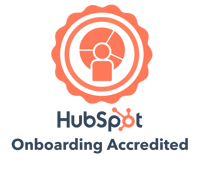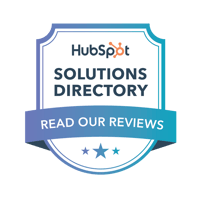Migrating from one CRM to another is always an intense process. Automations can only get you so far. You're still going to need to do a ton of manual lifting. And when you have multiple people, multiple teams and multiple organizations all working together, something is bound to go wrong.
My team and I do a lot of migrations from other CRMs into HubSpot. Through this process, I've seen some common mistakes that nearly everyone makes. If you know to watch for these pitfalls, you'll be able to avoid them during your own migration process.
Top 10 CRM Data Migration Mistakes You Need to Avoid When Migrating to HubSpot
1. Keeping all your processes and architecture the same
The biggest mistake I see organizations make is trying to copy over old processes exactly as they've always done them instead of taking the opportunity to fine-tune and improve processes. That goes for data architecture, too.
2. Not defining new processes and architecture
When it comes to a migration project, the more documentation, the better. When you decide you're going to move into a new system and improve your processes, take the time to write them down. It doesn't have to be more complicated than a Google spreadsheet that you can later share with team members.
Trust me, you'll forget details as you implement your shiny new system. Documenting this information will help you and the rest of the team ensure consistency moving forward.
3. Migrating everything over
4. Throwing out all historic data
5. Not selecting an internal project lead
And yes, this is true even if you're working with a migration partner. Any migration project will require tough data decisions, and you'll want to have someone intimately familiar with your organization to help make those choices. The lead will help bridge the gap between your organization and a HubSpot partner doing the heavy lifting of the migration work.
6. Only involving one team
To follow up on my previous point, I'm not saying only one person should be involved in the migration. Your CRM involves multiple team members, and the migration process will likely need to involve these different teams as well.
During the onboarding and implementation process, we typically work with team leads from IT, marketing, sales, and customer service to help define processes. HubSpot's CRM can benefit all of these teams, but it can be tough to unlock potential when management forces the issue on teams who haven't bought in, saying, "We spent a ton of money on this system, so you better use it." Instead, you'll want to take the time to help your teams understand how HubSpot can aid their duties, not add to them. Remember, some of your team members have had to create workarounds and their own processes because you haven't had a CRM or integration. Take the time to share how your new system will help them by saving time, improving accuracy, etc.
Related Content: HubSpot Direct or Through a Partner Agency?
7. Field mapping mayhem
A huge risk with data migration is improper mapping. This can cause the entire migration to fail and for your new HubSpot CRM to be unusable. There are many considerations to make with mapping, including:
- Failure to create necessary custom properties in HubSpot BEFORE you start migrating data
- Assuming custom objects from your current CRM will migrate and map correctly
- A mismatch between CRM fields (e.g. mapping a free-text field into a dropdown)
- Ignoring relational data like associations between contacts and deals
- Breaking relationships between properties
You'll need to create a clear plan for your architecture and how you will map your properties. In your current CRM, you should have the option to view and export all of your existing data properties. I recommend going through each of these properties to match them against a default or new property in HubSpot. Our team does this as part of any CRM migration, and the time spent early saves so much time later.
8. Not doing a test run
When you're ready to start migrating, it's tempting to just pull a lever and have everything go over all at once.
I promise you: it doesn't matter how airtight your mapping looks, how much planning you've done, or how skilled your team and partners are: something is not going to work the way you thought it would.
That's why I recommend always doing trial runs and validations before you start importing data in bulk. It's a lot easier to troubleshoot a small section of data than to start over from scratch from a massive, messy dataset.
9. Lack of clarity on what you're getting out of HubSpot
Because HubSpot is a SaaS solution with a suite of add-on features, it's important to know exactly what you've signed up for. I can't tell you how many times an organization is ready to start building marketing workflows, only to realize that they signed up for a starter program without any workflows included.
If you work with BizzyWeb to purchase and scope your HubSpot, we provide a clear guide on what's included with your subscription and what's not. But if you purchase on your own or already use HubSpot, you can easily cross-reference what you have access to via these two steps:
- After logging into HubSpot, click on your business name in the upper right. Then click on Account & Billing. This will tell you what products you've purchased.
- Next to any of these products, click on the "view pricing" button. This will direct you to a page with a full list of features. Scroll down a bit and you'll see a table that lays out what features are included at each level.
I also recommend going through this list with key team leads. This will help everyone know what they can do once the system is up and running.
10. Underestimating training and change management
Something important to understand is that HubSpot is going to be different. We hope it will be better for your whole team, but it'll be a learning experience. Getting training is key! Even if your migration is successful initially, it will be a failure if teams don't know where to find data or how to use the system.
As part of our HubSpot migration services, we include phased onboarding with training and documentation. HubSpot also offers self-guided learning, but it can be overwhelming for team members to know where to start and what's important to them. A customized training plan helps support employee buy-in and ensures that each team member is confident in navigating the CRM.
Related Content: New to HubSpot? Start with These Academy Courses
Moving to a new CRM is a big job. It's not just a simple sync. Things can (and will) get messy if you’re not careful. But if you take the time to follow these tips and avoid some of the usual mistakes, you'll be in a great spot. Do it smart, and you won’t have to do it twice.
HubSpot CRM Migration Services
As a Platinum HubSpot partner, we provide onboarding, implementation, service, HubSpot web design, marketing and automation for the most powerful sales and marketing tool available. BizzyWeb is actively invested in making a solution that works for you, not just a standardized tool or an off-the-shelf install.
Our HubSpot team will complete a deep dive into your current CRM, sales, and marketing tools. We work with you to:
1. Review your current processes
2. Determine your growth goals
3. Assess data and documentation
4. Create a custom implementation plan
Learn more about our HubSpot partner services here.
BizzyWeb is a Minneapolis-based digital marketing and web design agency that helps companies get the high-quality leads they need to grow and thrive. Our tactics include inbound marketing, SEO, advertising, web design, content creation and sales automation. We are an accredited HubSpot Diamond Partner and we offer full-service HubSpot onboarding, enablement and strategy for new and current users.





